A walk today with an emphasis on geology – probably because the birds were quiet and the flowers beginning to go over.
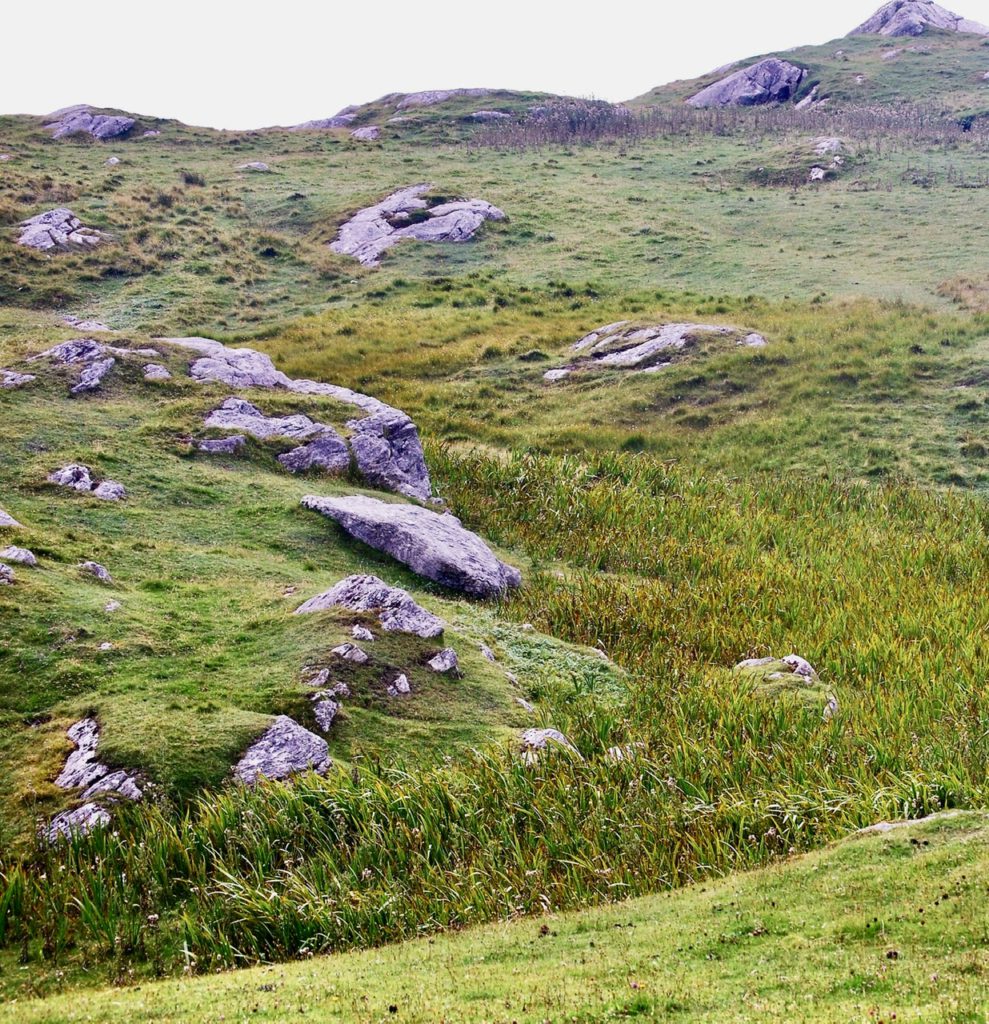
The geological history of Coll is a tale of fire and ice (to coin a phrase) or perhaps, more musically, a song of earth, wind and fire.
The ‘fire’ relates to the very early days of our planet’s history (c2-4 billion years ago) when the earth was a ball of molten lava speckled with volcanos. As this lava cooled and solidified, the source rocks that came to form Coll were established.
Over the subsequent hundreds of millennia, these ancient igneous rocks (among the oldest on the planet) were subject to some serious metamorphic treatment: lifted and buried, crushed and heated, as mountain ranges rose and fell in their vicinity. Often the intense heat and pressure would cause some mineral components in the rock to melt and recrystallise – creating bands of different minerals. This gives the rock a layered appearance, not unlike a sedimentary rock but the individual layers bear no relation to each other in terms of chronology. This is what geologists call a gneiss (pronounced ‘nice’). And, because this particular formation was first recorded on the Isle of Lewis, it is known as ‘Lewisian gneiss’. So that’s what most of the rocks on Coll are, which is nice.
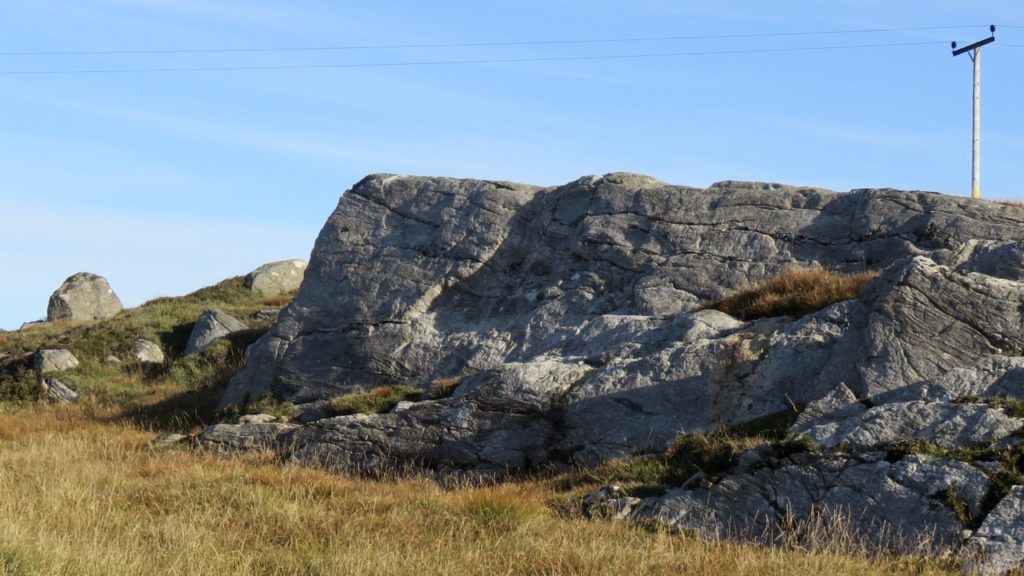
Now all those thousands of millions of years of interference meant that the original hard internal structure of the igneous rock was undone, replaced by something more fractured and broken. This is critical to how Coll now looks for two reasons.
Firstly, the rocks on Coll are riven in places by long basalt magma dykes, created when nearby volcanoes got too intense for their own safety and let off a pressure release valve, shooting molten lava along any lines of weakness in the neighbouring rocks.
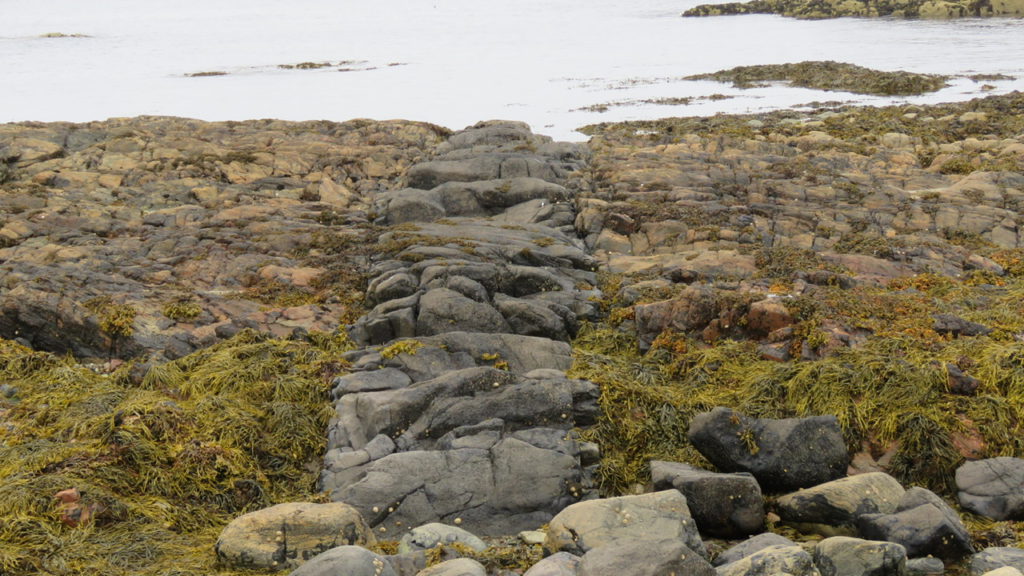
Secondly, when successive ice ages came, the slow-moving glaciers were able to flatten the cracked and broken gneiss before them, leaving behind a ‘landscrape’ (if you’ll forgive the pun). As a result the Isle of Coll is characteristically rolling and flat (the highest point is barely 100m above sea level). In contrast the igneous and volcanic rocks nearby (eg on Mull, Rum and the Treshnish Isles) were strong enough to withstand the glacial onslaught and remain standing proud.
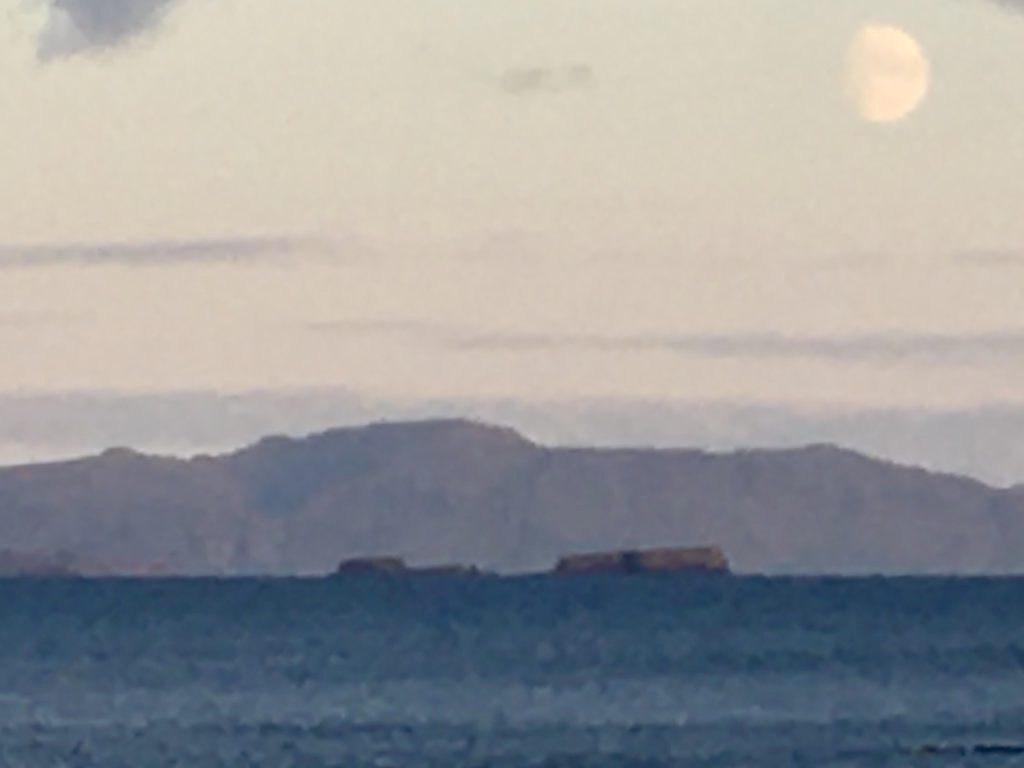
So that’s the earth, fire and ice dealt with but what about the wind?
Well, the wind came after the ice as storms blew a great blanket of shelly sea sand over the coastal rocks, forming huge dunes, in places over a mile inland.
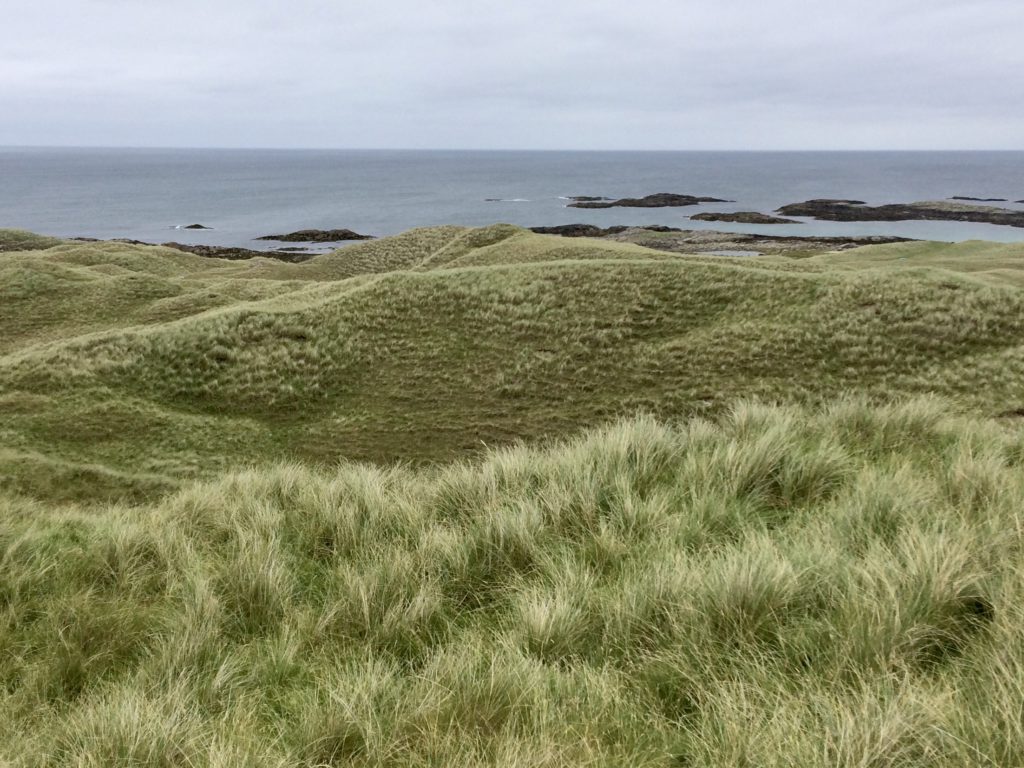
While the gneiss is the foundation of the wild moorland and wet peaty habitats, the sand creates the other great habitat of the island, the species-rich machair.
We didn’t spend the entire walk talking about the geology. There were plenty of other discussion points. We watched a buzzard shear low through the dunes and up popped another interesting fact. As you might expect for the island’s biggest resident bird-of-prey, buzzards take small mammals (including voles, rabbits and even hares in a surprise pounce), but did you know that they also spend a remarkable amount of time on the ground, feasting (if that’s the right word!) on lowly slugs and earthworms.
We also looked at the different growth strategies of thistles – well you would, wouldn’t you?! Greg contrasted the biennial growth pattern of the solitary Marsh Thistle (year 1: a simple rosette, year 2: a tall flowery spike) with the perennial Creeping Thistle (with long underground runners throwing up multiple flowering shoots every year). So, although superficially similar as individual plants, the first grows in splendid isolation, the second in dense clusters – as we discovered to our cost, while trying to push through them.
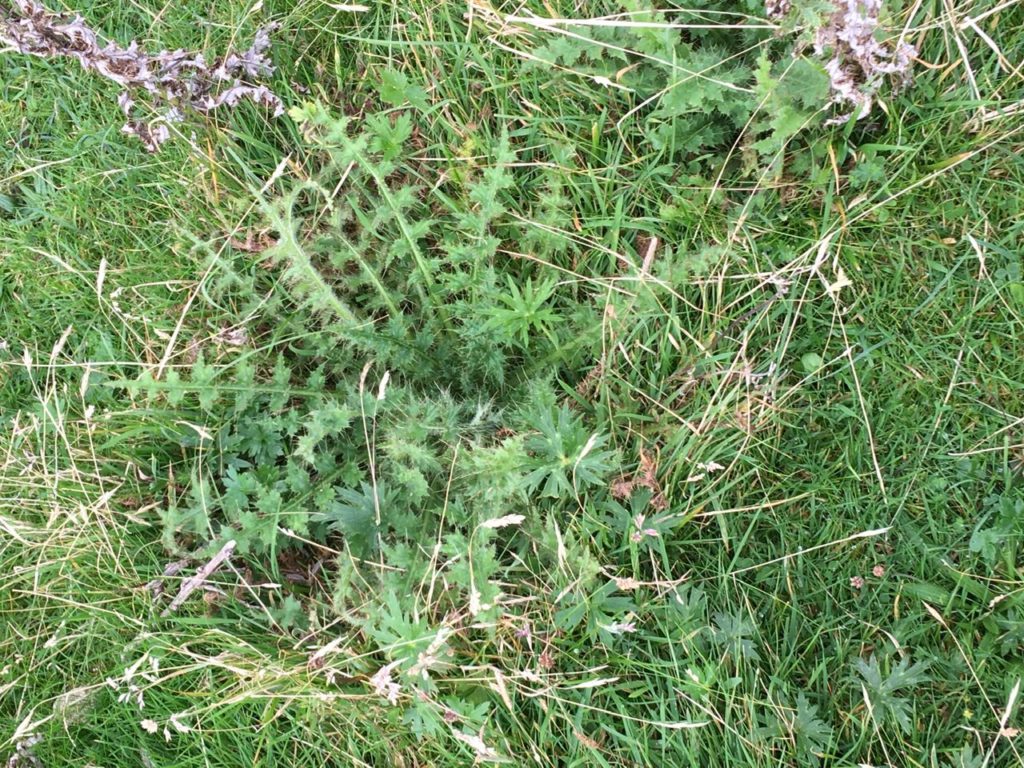
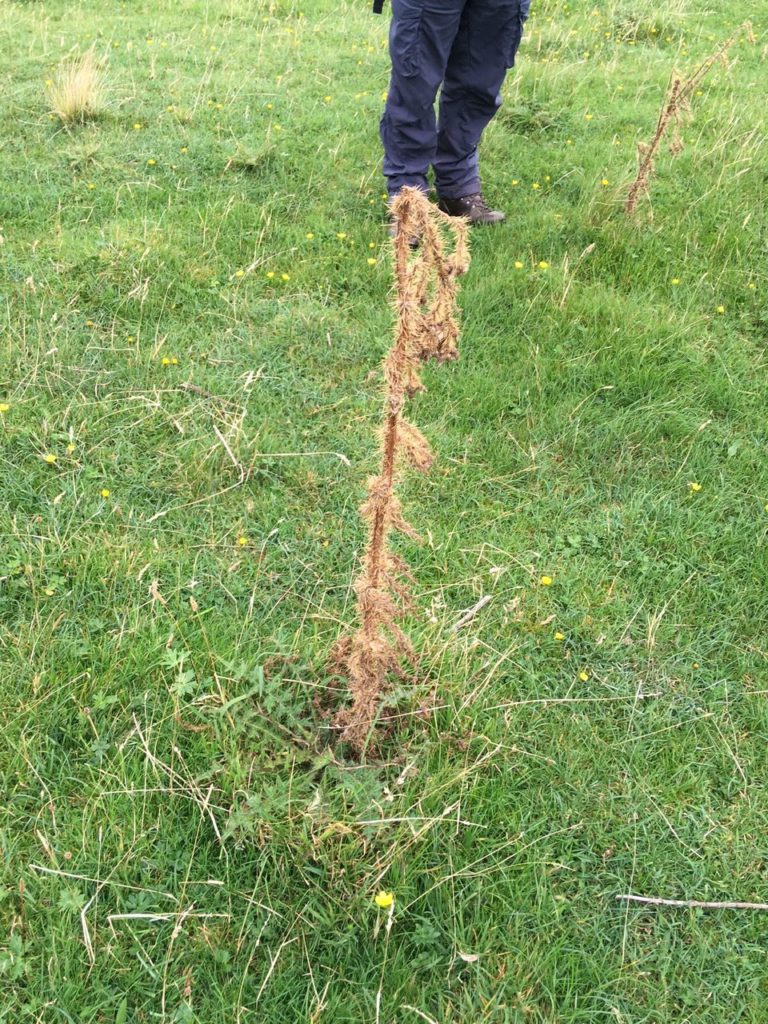
We visited a pile of stones in the dunes which, it is said, are the remains of a Bronze Age chambered tomb or ‘cist’. It was dug by archaeologists in the 1970s and the remains of three cremations were exhumed.
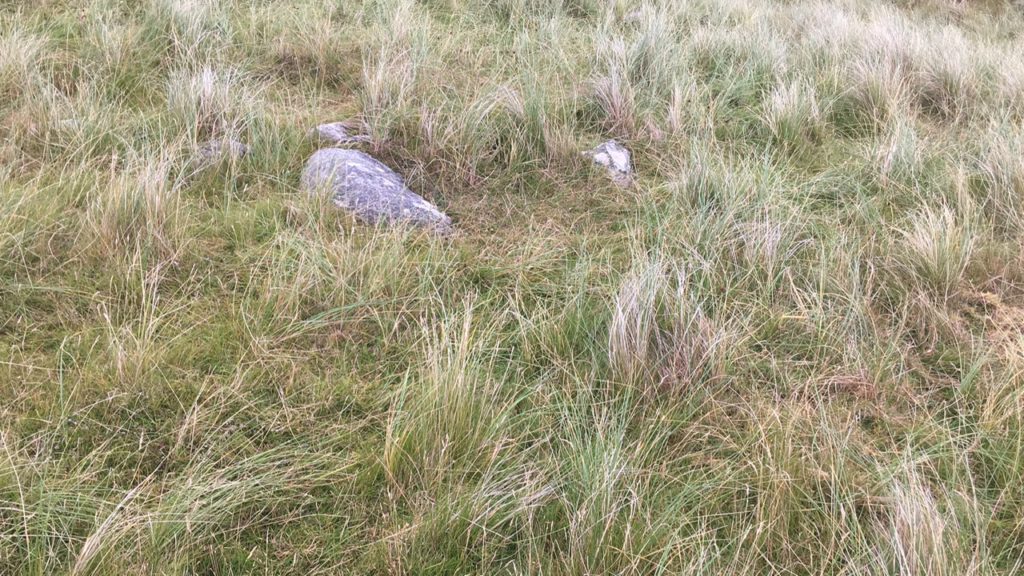
Coll is covered in such ancient sites: standing stones, cairns, crannogs and so on. The only challenge is how to distinguish them from the piles of rubble from more recently defunct buildings which also grace the dunes and moors of the island.
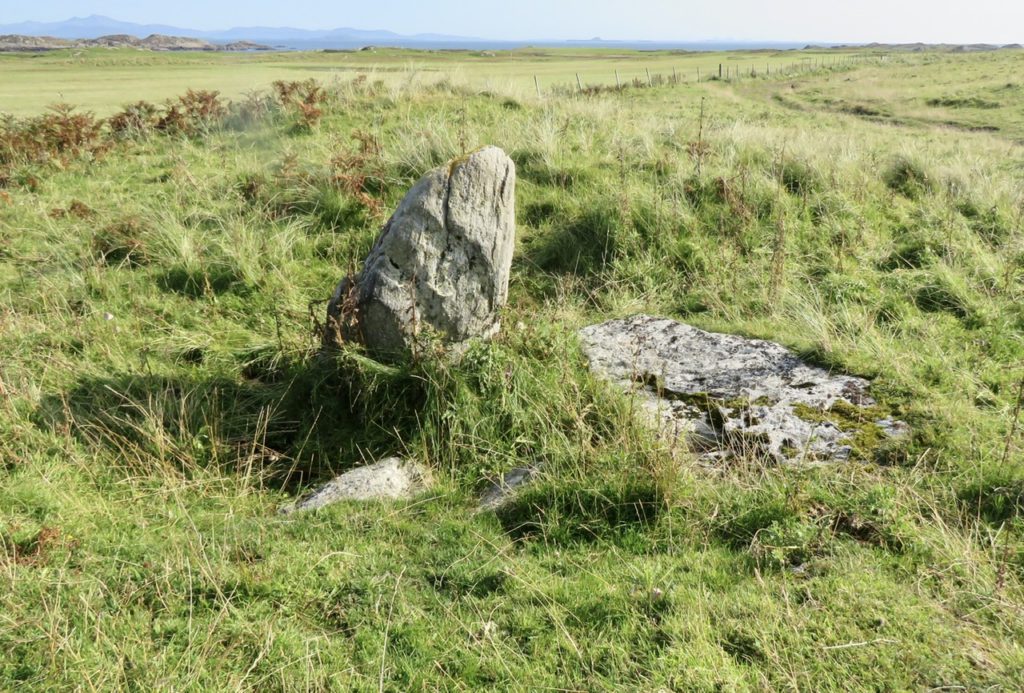
WildSmiths
September 2020
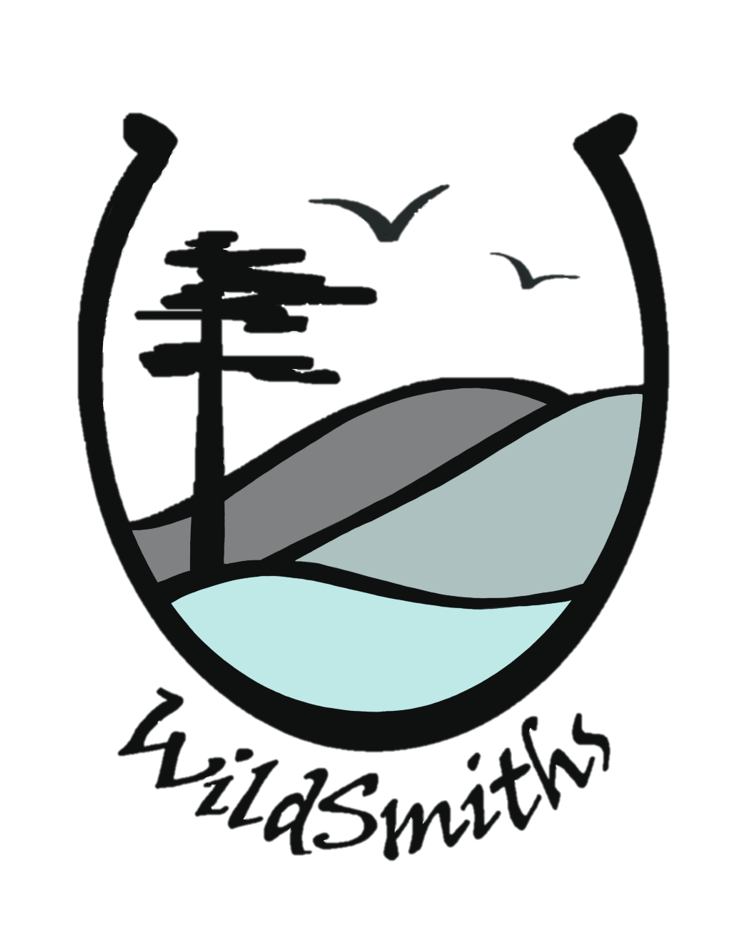

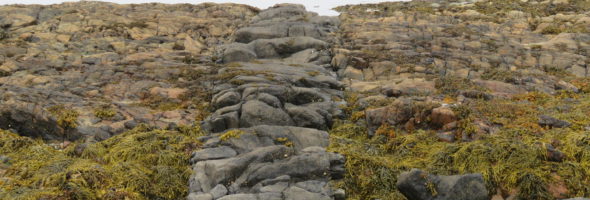
‘landscrape’… Love it! Might just have to borrow that one…
You’re welcome, of course Chris – any time.
Greg
What a wonderful piece about your surroundings………
Thank you Clare – it’s not hard. Coll‘s surroundings provide all the inspiration one could need…
Greg